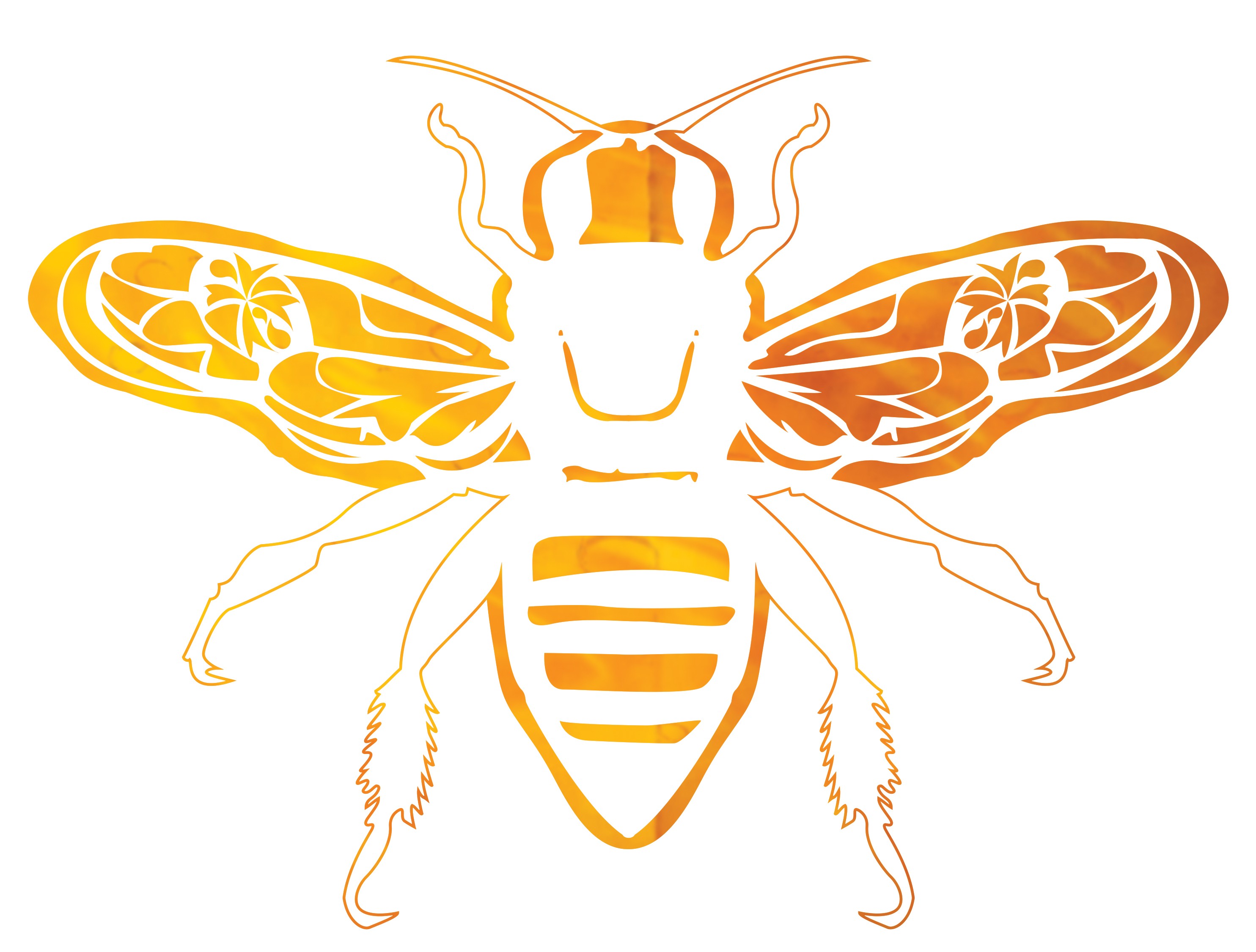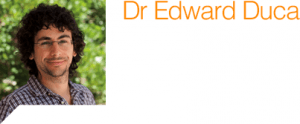Malta has around 220 beekeepers over just 316 km2. The country’s name is tied to honey that has been prized for its flavour and health benefits. Local researchers are finding out just how unique it is and some of its powerful properties.
Fear. One hundred bee stings can kill anyone. I was seeing over 20,000 in front of me. Beekeeper Ray Sciberras had just removed a hive’s crown board revealing the brood. My heart skipped a beat.
Thankfully I was zipped up in apiarist’s gear. Every surface of my body was covered. These precautions are essential. If one bee gets in, the rest will follow and sting and sting again. Apart from injecting anti-coagulating toxins, they release alarm chemicals that attract a smart swarm. It’s not their fault; they give up their life to defend the colony.

I was out with Ray to find out about bees in Malta and if there is anything special about their products. Unfortunately, researcher Dr Everaldo Attard (University of Malta), who Sciberras collaborates with, said ‘in the 90’s, a mite infestation destroyed a significant portion of the [local bee] population. Beforehand, Maltese honey was mainly produced by a typical endemic Maltese honey bee.’ Few of these bees are left and studies by other scientists are still trying to see whether they are unique. Sciberras now buys his hives mainly from France and Italy, and though you can even buy bees online, they should come from certified sources otherwise you risk disease.
| The 3 Seasons |
| Maltese beekeepers produce three honeys. Spring multiflora honey, harvested in May, is produced from the nectar of several flowers. These include thistles (Galactites tomentosa), silla (Hedysarum coronarium), wild borage (Borago officinalis), almond and citrus flowers and the cape sorrel (Oxalis pes-caprae). Maltese spring honey tends to be golden yellow in colour with a green, iridescent sheen and a delicate flavour. Wild thyme honey is harvested in late July/August. Unique to Malta, it is mostly exclusively produced from the nectar of wild thyme (Thymbra capitata). In June in Malta June little else flowers forcing the bees to just feed off it. An attentive beekeeper can monitor thyme’s flowering period and make this highly aromatic honey. Wild thyme honey varies from light to dark amber. Autumn honey is harvested at the end of November. During this season (August–November) bees take nectar from eucalyptus, carob (Ceratonia siliqua) and mustard plants (Diplotaxis spp.). Autumn honey varies from dark amber to dark brown. This honey has the most intense flavor and aroma, an acquired taste. |
A Bee’s Problem
Bees all over the world are suffering. Bees in the UK succumb to moulds, those in Europe pesticides, viruses claimed Israel’s hives. Even mobile phone antennae contribute, long exposure affects their health and ‘cause them to lose their orientation and they get lost,’ said Sciberras.
Bees are important for farmers. In 2012, in Northern China the situation was so bad that people were employed to pollinate apple trees by hand. Though nowhere near other countries’ scale, loss of colonies has even affected Malta. ‘Last year we lost around 14 hives’, stated Sciberras somberly. He only has around 30 hives. ‘The rain stopped very early in March, the bees were stressed and the harvests for spring and summer were a disaster.’
Not all locals look at bees favourably. Sciberras mentioned how some people destroy them if they suffer an accidental bee attack. Or worse, ‘you suffer from arson, people throw a cigarette in a dry field.’ They try to control fires by cutting nearby grass.
Such hive loss is a big blow. Each hive costs hundreds of euros and has around 50,000 bees. These bees make around up to 90 kilos of honey per year. If it is a good year a beekeeper like Sciberras can make ends meet, but he invests in other projects to make a decent living.
To make a drop of honey
A single bee cannot do much; together they form the smart swarm. A hive’s bees all come from the same queen that is protected by a ball of bees at the hive’s centre. The single queen lays all the eggs that are fertilised by different males’ sperm. This ensures genetic diversity but retains a common link since a hive is made up mostly of sisters. This connection makes them work efficiently together to create a powerful elixir: honey.
A forager bee can travel up to 3 miles to find the flowers it likes. Once there, it uses its straw-like proboscis to drink the sweet nectar into its honey stomach or crop. Bees have two stomachs. The honey stomach does not change the nectar; it stores the nectar till it flies back to the hive. The stomach can take 100 to 1,500 flowers to fill up. Once at the hive, the bee regurgitates the nectar into the crop of a processor bee.
The processor bee takes the nectar into the hive. It goes to the hive’s outer frames, finds one cell from thousands and fills it up. The bee adds an enzyme called invertase to help mature the nectar into honey. The enzyme breaks down sucrose into two simpler sugars called glucose and fructose.
These two sugars make up around 70% of honey. The nectar needs to be concentrated by drying so the bees fan their wings to help blow air over the maturing nectar. Water makes up around 18% of honey with another 5% being vitamins, pigments, enzymes, minerals, organic acids and aromatic oils. This 5% is responsible for a lot of the uniqueness of every honey.
Maltese researchers have been studying honey for over a decade. They have found that there are three harvests for Maltese beekeepers: the spring multiflora honey in May, wild thyme honey in July, and autumn honey by the end of November. Each honey is different because very different flowers bloom during each season. The flowers all have a distinctive nectar and pollen makeup. These give each honey a special character.
Maltese honey is unique. Attard states that its physical properties, chemical composition, and pollen makeup are different to honey elsewhere. Each harvest makes a distinct honey. A study recently published in Xjenza, the Journal of the Malta Chamber of Scientists, states that wild thyme honey has some of the highest percentage of thyme pollen of any honey worldwide. Greek honey comes in at 43% of pollen being thyme; Malta’s honey comes in at a whopping 85–90%.
| How to make a Queen |
| You have to be careful not to crush the queen’, said beekeeper Ray Sciberras. Otherwise the hive could be lost, though a healthy hive in spring can make a new queen. Scibberas explains most ‘bees are born female according to what larvae are fed they develop differently. So to make a queen an egg is laid in a [queen cup] and it’s fed more royal jelly to develop faster. They take 16 days instead of the normal 21. They have a longer abdomen and are sexually capable of reproducing within the next four days.’ When the queen is born she kills any other virgin rivals. She then needs to mate to create the next hive.To make a queen you need males. ‘A queen bee lays an egg in a bigger cell, and releases a signal through her body so that she doesn’t fertilise the egg and that egg becomes a male, a drone. The drones eat, they don’t forage. The hive places a balancing act between many workers and a few future queens plus drones. Get it wrong and it collapses. The drones take 23 days to develop. The fertile female needs to meet a male from another colony to mate. Under sunny blue skies she emerges, flying to the drone zone where the other men chase her. They fight to the death to mate with her. After successfully mating, they also die. She would mate with up to 15 drones to store 6 million sperm to be used for up to four years at her bidding. Once mated, the fertilised queen flies back to her old hive, steals the old queen’s bees and flies off in a giant ball of bees to found a new hive. Sometimes she violently replaces the mother. Beekeepers can also help the hive make queens. Ironically, Mifsud mentioned how today it is harder to make queens because they are being eaten by birds. Probably one consequence of the bird-hunting ban Malta can afford to live with. |
DNA Pollen
Maltese honey is not a new idea. The country’s name, ‘Malta, is derived from the Greek word Meli, meaning honey. The Phoenicians introduced the art of beekeeping and honey harvesting. Ever since the Maltese Islands were renowned for good quality honey, which was valorised for its taste and beneficial effects,’ proudly stated Attard. A traditional Maltese stone apiary (Miġbħa, in Maltese) that used to produce honey can still be seen in the village of Xemxija.
Fraud is a problem for Maltese honey. Importers can remove labels and sell imported honey as local honey. ‘We are looking for establishing a PDO — Product Designation of Origin — like we have for wine’, said Sciberras. Research is the only solution to fight fraud.
The mix of flowers that bloom in Malta are unique. The bees will gather pollen from this mix, which makes pollen characterisation a powerful way to figure out if a honey is Maltese or not. Each Maltese honey type’s pollen profile has already been found. Sciberras and Attard are taking this one step further using DNA. ‘So you extract the DNA from the pollen, then see which flowers are in the area. After that you can say with positive certainty which honey is from Mġarr or Żurrieq’, two villages in Malta less than 18 km apart. If these advanced techniques are combined with other physical and chemical properties a profile for the type and place of Maltese honey can be set in stone creating a ‘Malta honey’ trademark. The importance of a Malta brand are due to the powerful benefits in honey local researchers are uncovering. Silvan Spagnol in 2010 tested whether Maltese honey is better than sugar in busting bugs. The high concentrations of sugar do kill microbes, however honey is not just sugar. The proteins, flavonoids, and terpenoids in honey make it a powerful antimicrobial liquid. Malta’s honey could have powerful health benefits.


Honey, there is someone else
When Sciberras opened the hive, pulling up a frame full of hexagonal honeycombs, there was a slight cracking sound. I saw a sticky substance breaking apart. That substance is propolis. Bees use it to keep the hive together. Cleverly, it is both a sealant and anti-microbial substance making a hive highly sterile.
‘Propolis is produced by honeybees after collecting resins from botanical sources such as trees and woody shrubs,’ said postgraduate researcher Simone Cutajar (supervised by entomologist Dr David Mifsud and pharmaceutical chemist Prof. Claude Farrugia). Mifsud continued that plants produce these resins to protect themselves. Plants have tender buds that develop into new flowers or shoots. The buds’ tenderness make them very tasty for animals to eat. So ‘these buds are covered with chemistry to safeguard them. The only insects that can collect this chemistry are honeybees, and they transform this chemistry into propolis. The propolis saves the bud from being eaten,’ explains Mifsud.
‘The bees carry these resins in pollen sacs on their hind legs,’ said Cutajar. She studied propolis at the University of Malta and the Bulgarian Academy of Sciences. Bees mix the resin with beeswax to insulate and fix the hive. ‘If a mouse gets inside, they will kill it with bee venom, but then the bees have no idea how to get it out. They just cover it with propolis and mummify it,’ said Mifsud.
Humans for millennia have exploited the anti-microbial properties of propolis. This inspired the UoM team to find out if propolis in Malta is unique and potent. ‘Yes, there is a Maltese propolis’, stated Farrugia. Its colour ranges from nearly black to a lighter reddish brown and its texture ranges from very pliable and sticky, to hard and brittle.
The researchers first saw its chemical composition. The type of fatty acids, polysaccharides, and phenols, was the same as other Mediterranean propolis (Greek and Sicilian). Then they found unique molecules that were found only in Iranian propolis. The distinct mix means that the researchers could use these as markers to place a Maltese flag on the substance.
Maltese propolis can also bust bugs. In the lab it was just as good as other types and stopped fungi and bacteria growing. It means that it can be used as a natural remedy — powerful implications for industry and medicine.
| The Properties of Honey |
| Honey is a mix of sugars (77%), water (18%) and complex compounds like vitamins, enzymes, and pollen (5%). The compounds in this 5% of honey give its flavor, some health benefits, and unique character. The main sugars in honey are glucose and fructose. Honey crystallises because glucose is less soluble than fructose. The glucose crystallises out in the honey. So a honey with lots of glucose crystallises more quickly. On the other hand, honey with more fructose rarely crystallises. Crystallisation occcurs naturally. Heating honey makes it runny again but degrades the beneficial chemicals in honey and kills the aroma. For local honey, autumn honey crystallises the most rapidly with small, regular crystals, followed by spring honey cystallising in winter, with thyme honey hardly ever crystallising. |
Bees and Our Health
Honey and propolis are remarkable natural products with the power to heal and cure. In a world where many are seeking alternatives to conventional medicine it is critical for researchers to find out at what dose and for which disease they can be used. Lives are at stake.
Many natural remedies are found with claims ranging curing from cancer to asthma. Such claims can be dangerous when effective conventional medicines exist. Imagine abandoning a chance to recover in favour of a poorly tested remedy.
Many types of honey can cure wounds. There are many products on the market to bandage wounds. Honey has antimicrobial compounds from hydrogen peroxide to phenol to organic acids that make it a powerful wound dressing. Since it is a complex brew of chemicals, bacteria have not developed a resistance to honey, bypassing the huge problem of antibiotic resistance. Some hospitals even use specially prepared honey to treat cuts and burns.
Propolis has been tested on cancer cells. The cancer cells growing in a petri dish stopped growing. ‘We have shown [Maltese propolis’] antioxidant activity’, said Farrugia. Another group of local researchers lead by Dr Pierre Schembri-Wismayer also saw that Maltese propolis can be toxic to cancer cells. This phenomenon was due to the level of diterpenoid totarol, a well-known antioxidant and antibacterial chemical. The more diterpenoid, the more effective the propolis.
This research places a spotlight on Maltese honey and propolis. It means it could also be effective against cancer, but this has not been tested in animals or clinical trials. There is a big leap of faith from a lab experiment to the real world. Studies on propolis from other countries in mice indicated that it could help treat cancer when used with other chemotherapies, but the latest clinical studies show it does not work for colon cancer and chemotherapy induced mouth ulcers. On the other hand, a small clinical study in Egypt showed that honey could treat these mouth ulcers — confusing results.
“Many types of honey can cure wounds”
Most medicines take around a decade to go from lab to medicinal product because of the experiments required. Though an imperfect system, this rigour tries to prevent products that either do not work or are harmful from reaching the market.
Antioxidants are another cancer-busting buzzword found on natural products worldwide. These chemicals basically soak up oxygen radicals that are known to react with DNA and cause mutations that lead down the dark road of cancer. Unfortunately, many cancer-busting berries have ingredients tested on cancer cells in labs and not in the real world. For antioxidants to be effective they need to get into blood, through our liver, and into cells to soak up oxygen radicles before they cause damage. Saying that taking antioxidant tablets can prevent cancer is irresponsible. The best defence is still a healthy diet and regular exercise.
Researchers need to find out which chemical/s in honey and propolis are effective. They need to test the level of this ingredient to make sure what level is effective to treat disease. Afterwards, clinical trials are needed to find if it works in the real world. Till then we are playing Russian roulette.
Bees are tiny insects vital for flowering plants worldwide. Most fruit we eat need bees to develop. They make honey and propolis that have powerful properties. Without bees the world just might stop.
[ct_divider]
Find out more
- Abdulrhman, M., et al. Honey and a mixture of honey, beeswax, and olive oil-propolis extract in treatment of chemotherapy-induced oral mucositis: a randomized controlled pilot study. Pediatric hematology and oncology 29, 285–292, doi:10.3109/08880018.2012.669026 (2012).
- Attard, E. & Mizzi, J. Physicochemical characterization of Gozitan Honey. International Journal of Food Studies 2, 180–187, doi: 10.7455/ijfs/2.2.2013.a5 (2013)
- Gambin, C., Farrugia, C. & Lanfranco, E. Pollen Characterisation of Maltese Honey. Xjenza Online, 33–46, doi: http://dx.medra.org/10.7423/XJENZA.2013.2.05 (2013).
- Favre, D. Mobile phone-induced honeybee worker piping. Apidologie 42, 270–279, doi: 10.1007/s13592-011-0016-x (2011).
- Zammit, E. J. et al., Totarol Content and Cytotoxicity Varies Significantly in Different Types of Propolis. Research Journal of Pharmaceutical, Biological and Chemical Sciences 4, 1047–1058, (2013).
- Kumar, N. R., et al. Exposure to cell phone radiations produces biochemical changes in worker honey bees. Toxicology international 18, 70–72, doi: 10.4103/0971-6580.75869 (2011).
- Natarajan, S., Williamson, D., Grey, J., Harding, K. G. & Cooper, R. A. Healing of an MRSA-colonized, hydroxyurea-induced leg ulcer with honey. The Journal of dermatological treatment 12, 33–36, doi: 10.1080/095466301750163563 (2001).
- Simon, A. et al. Wound care with antibacterial honey (Medihoney) in pediatric hematology-oncology. Supportive care in cancer: official journal of the Multinational Association of Supportive Care in Cancer 14, 91–97, doi:10.1007/s00520-005-0874-8 (2006).
- Tomazevic, T. & Jazbec, J. A double blind randomised placebo controlled study of propolis (bee glue) effectiveness in the treatment of severe oral mucositis in chemotherapy treated children. Complementary therapies in medicine 21, 306–312, doi:10.1016/j.ctim.2013.04.002 (2013).






Comments are closed for this article!